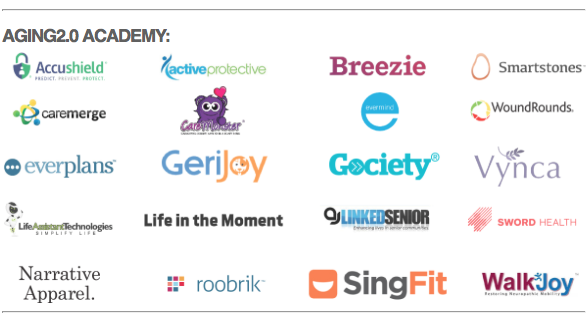Technology has an ageist connotation – it signals new changes in society and has become an obsession to newer generations. It is not common to link the older population to the technological craze; however, as of recently, this association has been challenged.
The United States population aged 65+ will increase from 40 million to 80 million in the next thirty years. The desire to market products for this age group has become increasingly popular, and investors are starting to eye the types of services they can tap in to. One such market of interest is new technology to cater to the aging population, which has proven to be no easy feat.
Take GeriJoy for example, a tablet-based “pet” avatar that can have human interactions– intentionally designed for a patient with dementia or other cognitive disease. Victor Wang previously worked in research for the human machine program with NASA’s telerobotics platform, but changed career paths when this concept of his took off. On a seven-inch tablet, an animal can watch over an older individual, and have 24/7 conversations with them as if it were a real human. The product is marketed as “the benefit of pet therapy without any smells, allergies, cleaning up, bites, or food and veterinary bills.” The pseudo-pet can also remind your older loved-one to take their medication or call an emergency contact if they fall. The idea has caught the interest of many, however, the resistance of a senior to feel comfortable with new technology still serves as a barrier.
The numbers game is a bit up in the air to label the market of technology for an aging population. According to BCC Research, elder-care technology products were valued at $2.7 billion in 2012. With a compound growth rate of 17.7% a year, this market is projected to reach $7.2 billion by 2018. With growing awareness of the aging Baby Boomers, the efforts to allow these individuals to “age-in-place,” rather than moving into a nursing home, has given life to this sector of the market. It’s a well-publicized issue that our society does not have enough caregivers to provide services for the 68% of Baby Boomers who are confident they will not leave their house, so companies are viewing this as an opportunity to come up with some type of answer. Other projections are claiming there is a $30 billion technology opportunity to allow seniors to age-in-place, but this can only be reached if the stigma of “confusing technology” for elders can change.
Here enters Google and the Aging2.0 Academy, a partnership that is bringing new innovation to the field of technology and the aging population. Google for Entrepreneurs will support the efforts of the Academy both financially and through mentoring. The Aging2.0 Academy is a yearlong program that guides startups in the field of long term care. In the upcoming “class,” GeriJoy is one of the companies to embark on this experience. Based in San Francisco, the startups will have opportunities to network with key players in the gerontology and technology fields, hopefully establishing new relationships that will produce game-changing products.
The Aging2.0 Academy was founded by a trio of entrepreneurs and investors, all with the same goal to introduce technology to the aging-in-place industry. Although their background in gerontology is not robust, their determination to ignite new technological innovation to this market consequently brought awareness to the business of caring for seniors. Although it will take time to introduce the older generation to different forms of technology, with the new innovations, this industry could live up to its hypothetical potential. With a lot of risk on the line for the start-ups, there could be many rewards for the investors.


Leave a Reply
You must be logged in to post a comment.